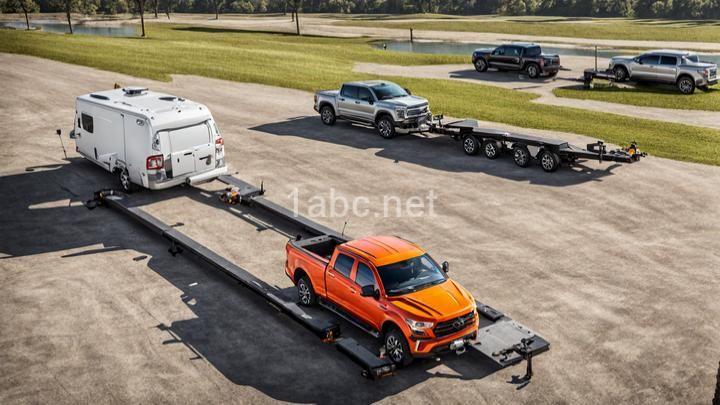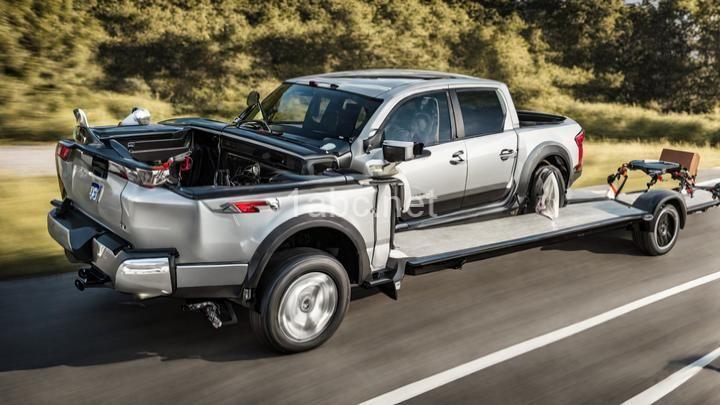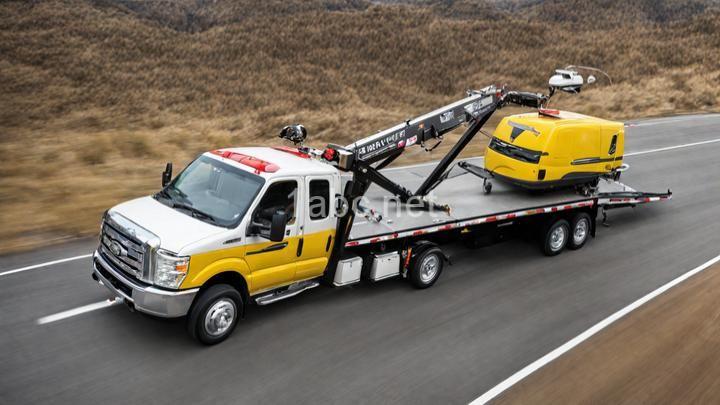Understanding Towing Weight Distribution: Everything You Need to Know

Introduction:
Welcome to our comprehensive guide on understanding towing weight distribution. In this blog post, we will delve into the importance of proper weight distribution for safe and efficient towing. Whether you are a seasoned tower or a beginner, understanding towing weight distribution is crucial to ensure the stability and safety of your towing vehicle.
I. What is Towing Weight Distribution?
Towing weight distribution refers to the proper allocation of weight between the tow vehicle and the trailer being towed. It is essential to distribute weight evenly to maintain control and stability while towing. When weight is not properly distributed, it can lead to a host of problems, including reduced steering control, poor braking performance, and increased risk of accidents.
II. Factors Affecting Towing Weight Distribution:
A. Gross Vehicle Weight Rating (GVWR):
The Gross Vehicle Weight Rating (GVWR) is the maximum weight that a vehicle can safely tow, including its own weight and the weight of any cargo or passengers. Exceeding the GVWR can put excessive strain on the vehicle's suspension, brakes, and engine, leading to unsafe towing conditions. It is crucial to understand and adhere to the GVWR specified by the vehicle manufacturer.
B. Tongue Weight:
Tongue weight refers to the downward force exerted on the hitch ball by the trailer's coupler. It plays a significant role in the stability of the towing setup. Ideally, tongue weight should be around 10-15% of the total trailer weight. Insufficient tongue weight can cause trailer sway, while excessive tongue weight can overload the tow vehicle's rear suspension, affecting its handling and braking capabilities.
To measure tongue weight, you can use a specialized tongue weight scale or visit a weigh station. Adjusting tongue weight can be done by redistributing the cargo within the trailer or using a weight distribution hitch.
C. Trailer Axle Position:
The position of the trailer's axles also affects weight distribution. Placing the axles too far forward or too far back can lead to an imbalanced load, resulting in poor handling and increased stress on the tow vehicle. Adjusting the trailer axle position to achieve proper weight distribution can significantly improve towing stability.
III. Calculating Towing Weight Distribution:
A. Determining Total Weight:
To calculate the total weight of a loaded trailer and tow vehicle, you need to consider the weight of the empty vehicle, passengers, cargo, and any additional accessories. It is crucial to be accurate in these calculations to ensure that you do not exceed the GVWR or cause imbalanced weight distribution.
B. Ideal Weight Distribution Ratio:
The ideal weight distribution ratio between the tow vehicle's axles and the trailer axles is typically around 60% of the total weight on the tow vehicle's axles and 40% on the trailer axles. This ratio helps maintain stability and control while towing. Visual examples or illustrations can be helpful in understanding this concept.
IV. Tips for Proper Towing Weight Distribution:
A. Load Placement:
When loading a trailer, it is essential to distribute the cargo evenly to achieve proper weight distribution. Placing heavier items closer to the trailer axles helps maintain stability. Additionally, securing the load to prevent shifting during transit is crucial for maintaining balance.
B. Equipment Considerations:
Using appropriate towing equipment can greatly enhance weight distribution and towing safety. Sway control devices, such as sway bars or sway control hitches, help minimize trailer sway caused by crosswinds or passing vehicles. Weight distribution hitches redistribute some of the trailer's tongue weight to the tow vehicle's front axle, improving steering and braking performance.
When selecting towing equipment, ensure that it is compatible with your tow vehicle and trailer. Follow the manufacturer's instructions for installation and use to maximize effectiveness.
V. Ensuring Safety and Compliance:
To ensure safe and compliant towing, it is essential to adhere to local regulations and guidelines. Consult your vehicle's owner manual for specific towing recommendations and limitations. If you have any doubts or questions, seek professional advice or consider attending towing safety courses to enhance your knowledge and skills.
Conclusion:
Understanding and implementing proper towing weight distribution techniques is crucial for safe and stress-free towing experiences. By considering factors such as GVWR, tongue weight, and trailer axle position, you can achieve optimal weight distribution and maintain stability while towing. Remember to calculate total weight accurately, aim for the ideal weight distribution ratio, and follow practical tips for load placement and equipment considerations. Prioritizing safety and compliance ensures enjoyable and hassle-free towing adventures. Happy towing!
FREQUENTLY ASKED QUESTIONS
What is towing weight distribution?
Towing weight distribution refers to the distribution of weight across a trailer when it is being towed by a vehicle. It is important to have proper weight distribution to ensure safe and stable towing. This involves transferring some of the trailer's weight from the rear to the front and to the tow vehicle’s front axle. This helps prevent excessive sagging of the rear of the tow vehicle and improves steering control and stability during towing. Various methods such as weight distribution hitches or sway control devices can be used to achieve proper weight distribution when towing heavy loads.
Why is towing weight distribution important?
Towing weight distribution is important because it helps maintain proper balance and stability of the towing vehicle and trailer. When the weight is distributed evenly, it prevents issues such as swaying or fishtailing of the trailer, which can be dangerous. Additionally, proper weight distribution ensures that the towing vehicle can handle the load effectively, allowing for improved braking, steering, and overall control.
How does towing weight distribution affect vehicle performance?
Towing weight distribution plays a crucial role in determining the performance of a vehicle while towing. Proper weight distribution helps maintain stability, control, and safety on the road.
When towing a trailer, the weight of the trailer and its contents can put additional strain on the vehicle. If the weight is not properly distributed, it can lead to several issues:
- Handling and stability: If the majority of the weight is concentrated towards the rear of the trailer, it can cause the rear of the vehicle to sag, resulting in reduced steering control and increased swaying or fishtailing of the trailer. On the other hand, if the weight is placed too far towards the front, it can cause the front of the vehicle to elevate, affecting the weight distribution on the front wheels and reducing stability.
- Braking performance: Improper weight distribution can also impact braking performance. When braking, a significant amount of weight is transferred to the front wheels. If the trailer is too heavy at the rear, it can reduce the weight on the front wheels, leading to decreased traction and potentially longer stopping distances.
- Tire wear: Uneven weight distribution can cause excessive stress on certain tires, leading to uneven wear and reducing their overall lifespan.
To optimize vehicle performance while towing, it is essential to achieve proper weight distribution. This can typically be achieved by properly loading the trailer, ensuring that heavier items are placed towards the front or center of the trailer and evenly distributed from side to side.
It is also advisable to check the vehicle's tow rating and adhere to the manufacturer's recommendations for towing capacity and weight distribution to ensure safe and optimal performance.
What are the key components of a towing weight distribution system?
A towing weight distribution system typically consists of several key components:
- Hitch Receiver: This is the part that attaches to your vehicle's frame and provides a connection point for the weight distribution system.
- Weight Distribution Head: Also known as the shank or drawbar, this component connects to the hitch receiver and serves as the attachment point for the weight distribution system.
- Spring Bars: These bars are attached to the weight distribution head on one end and to the trailer's frame on the other end. They distribute the weight of the trailer and help level the vehicle, improving stability and handling.
- Adjustment Hardware: Typically included with the weight distribution system, this hardware allows for adjustments to be made to properly distribute the weight between the towing vehicle and the trailer.
- Sway Control: Some weight distribution systems come with built-in sway control or offer it as an additional feature. Sway control helps to minimize trailer sway or fishtailing, improving overall towing safety.
It's important to note that weight distribution systems may vary depending on the specific brand and model. Always consult the manufacturer's instructions and guidelines when installing or using a weight distribution system.



